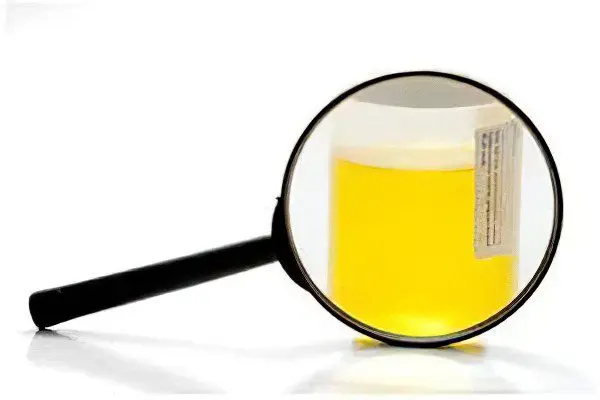Contents

Analysis according to Nechiporenko is usually called a kind of laboratory study of urine, in which microscopy of its sediment is performed with the determination of the number of leukocytes, erythrocytes and cylinders per unit volume (1 ml). Such an analysis differs from the general clinical examination of urine in greater specificity. It is prescribed in case of detection of pathological changes in the general analysis to exclude or confirm renal pathology.
How to collect a urine test according to Nechiporenko?
A urine sample according to Nechiporenko is considered a specific study, on the basis of which serious conclusions are made about the state of kidney health.
Preparation for its implementation should be appropriate:
Heavy physical activity on the day before the study should be excluded. The same applies to spicy and fried foods, psycho-emotional overstrain, food and dyes that affect the color of urine, and drugs. The organism must be in a state of relative functional rest;
Do not conduct a study in the period before, during and immediately after menstruation. This may lead to false results. The same applies to diagnostic manipulations with the bladder (cystoscopy, catheterization);
The direct collection of urine should be preceded by hygiene procedures with thorough washing of the genitals with warm water;
Preparation of a clean plastic container or other container is required. The main thing is that it be closed with a lid;
The material is directly taken by collecting only the urine that is released in the middle of the urination process. This means that the initial portions of urine are discharged into the toilet, and immediately after that, a collection container is placed under the stream. They also finish the act of urination not in a container, but in a toilet bowl. Only 20-25 ml is sufficient for analysis.
What is the norm for urinalysis according to Nechiporenko?
Normal indicators are as follows:
Leukocyte cells – up to 2000 pcs. in 1 ml;
Erythrocyte cells – up to 1000 pcs. in 1 ml;
Cylindrical elements – up to 20 hyaline cylinders.
Deciphering the analysis of urine according to Nechiporenko

An important aspect of any diagnostic study is not only the correctness of its conduct, but also a competent assessment of the obtained indicators. The reliability of the diagnosis and the effectiveness of treatment tactics in relation to each patient depend on this.
Indicators analysis
The diagnostic procedure performed determines the cellular composition of urine. Its deviations from the normative indicators upwards occur only with a serious pathology of the excretory system.
Evaluated by:
Leukocytes. These cells are immune and must be present in the blood and urine in a certain concentration, which indicates the normal protective properties of the body. If an excess of these cells is recorded in the urine, this indicates their increased migration to the kidneys, which is direct evidence of the presence of an infection and an inflammatory process;
Erythrocytes. These blood cells must not pass into the urine. But since a person is in constant motion, and not all cells are the same size, periodically single erythrocytes seep through the renal barrier or vascular wall of the inner surface of the urinary tract. An increase in the number of erythrocytes in the urine is evidence of either damage to the glomerular apparatus of the kidneys, or mechanical irritation of their mucous membrane. The condition of erythrocytes is necessarily assessed – fresh or leached cells. That says a lot;
Cylinders. They are a kind of protein casts of the renal tubules. Their basis is a protein that does not have time to be reabsorbed into the blood from the primary urine. The sedimentation of leukocytes, salts and other cellular elements of urine on it leads to the formation of microscopic plugs in the renal tubules. As they are washed away, they are excreted in the urine. The casts can be hyaline, granular, epithelial, erythrocyte, and waxy. It all depends on their appearance and structure, which is determined by the nature of the pathological processes in the renal tissue. Normally, casts can be detected in the urine, but only of the hyaline series.
Analysis results
If deviations from the norm of indicators of the general analysis of urine were not confirmed by its microscopic examination according to Nechiporenko, this indicates sampling errors and is an indication for re-diagnosis, but after more thorough preparation. In cases where the indicators obtained during the Nechiporenko urine sample are significantly higher than the established norms, the patient probably has pathologies of the kidneys or urinary tract. Indicators corresponding to normal values, especially confirmed by repeated studies, exclude any renal pathology.
bad result
This concept means significant deviations from the norm of any of the indicators of urinalysis according to Nechiporenko. What it can be, and what diseases it causes, is displayed in the table.
Leukocyturia above 2000/ml |
|
Hematuria above 1000/ml |
leached erythrocytes:
|
Cylindruria hyaline above 20/ml |
|
Granular cylinders in any quantity |
|
Waxy cylinders in any quantity |
|
Epithelial casts in any quantity |
|
Erythrocyte cylinders in any quantity |
|
Video: urine analysis according to Nechiporenko and Zimnytsky in normal and pathological conditions:









